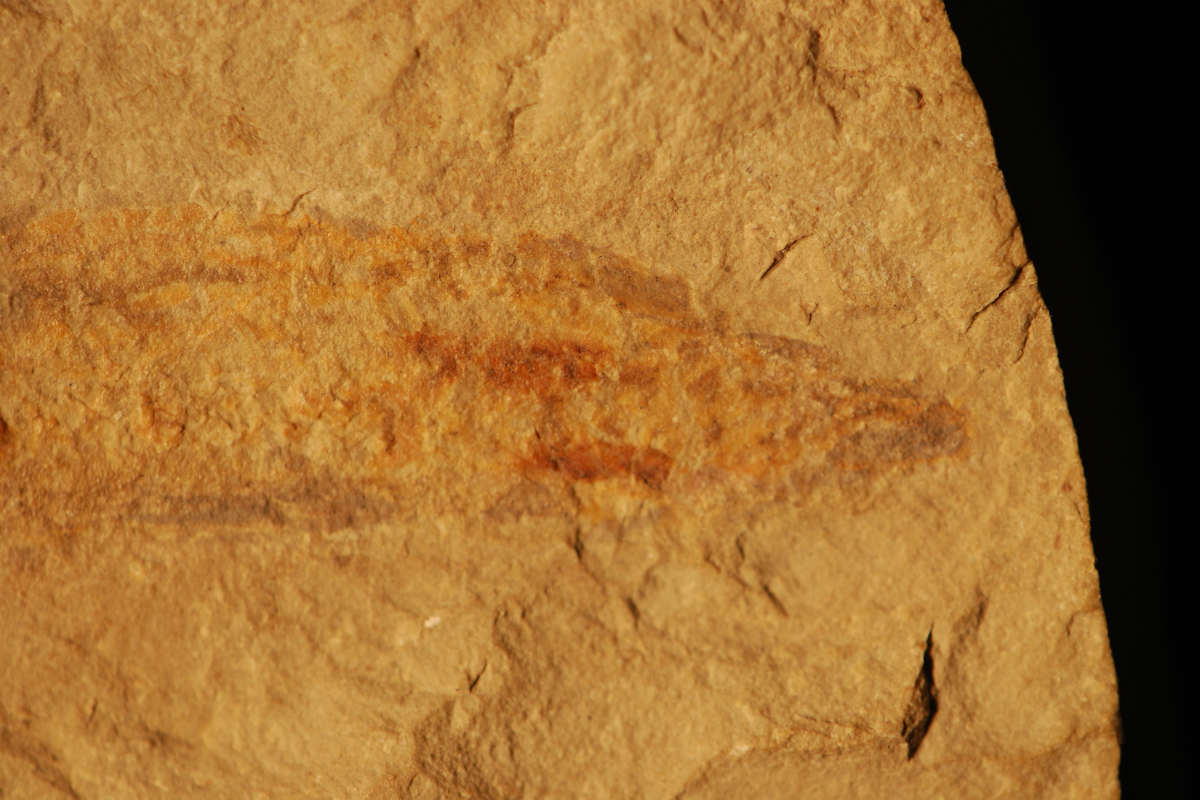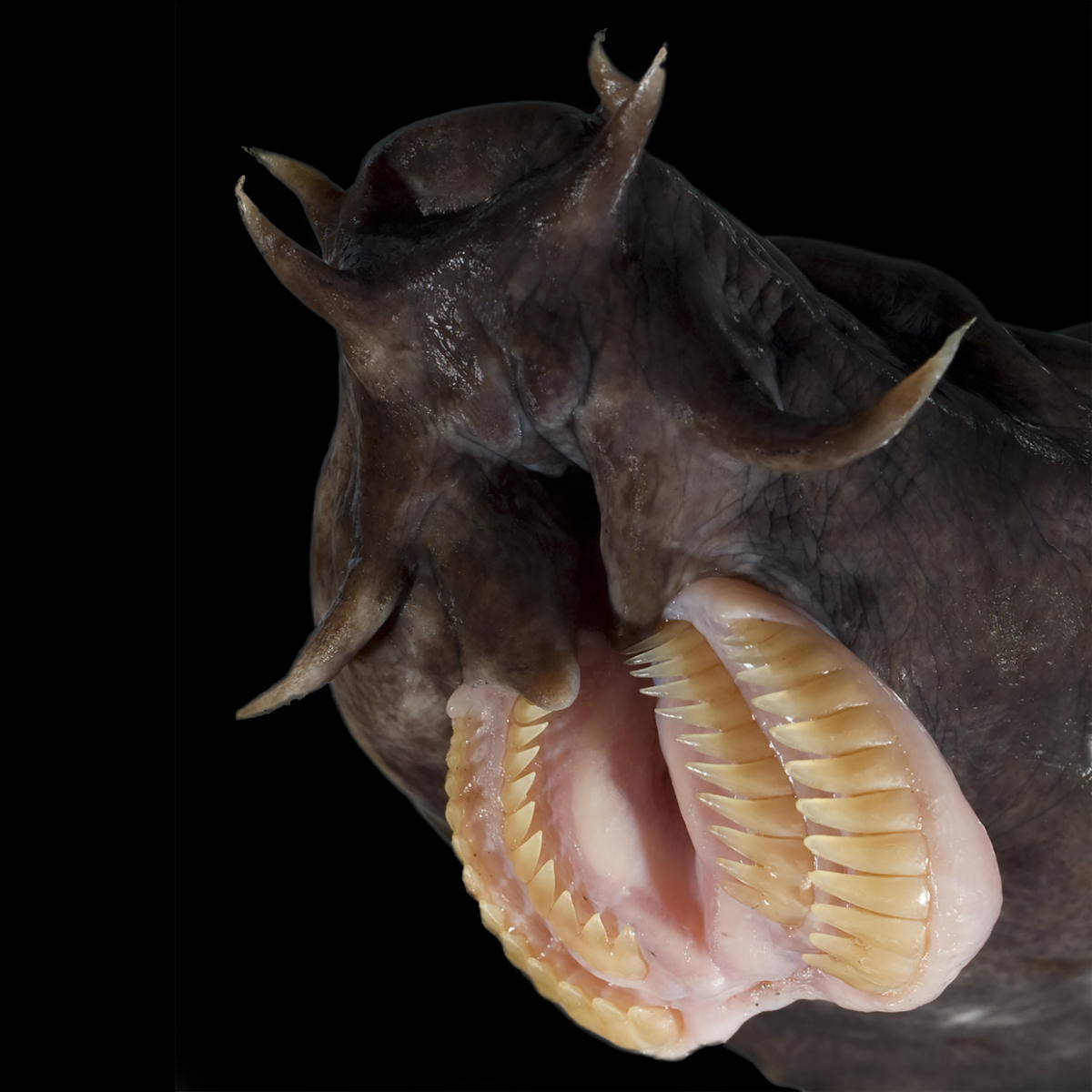
Closeup of the head of Tethymyxine tapirostrum, a 100-million-year-old, 12-inch long fish embedded in a slab of Cretaceous period limestone from Lebanon, believed to be the first detailed fossil of a hagfish. Credit: Tetsuto Miyashita, University of Chicago
Scientists have discovered one of the oldest known hagfish fossils with rare soft tissue preservation, according to a new study by an international team of paleontologists. The results give into hagfish of the past-and show the animals have remained largely the same since at least the Late Cretaceous period.
"Soft tissues are rarely preserved, but can include 90 per cent of the anatomical information of any animal," explained Philip Currie, renowned paleontologist and professor in the Department of Biological Sciences. "This new specimen is one of the oldest hagfish known and includes chemical traces of slime glands for the first time."
Hagfish are an object of fascination for researchers and science enthusiasts. The eel-shaped fish is a type of jawless vertebrate that lives in cold marine environments around the world. Interestingly, hagfish produce slime to protect themselves from predators-in fact, they can produce a full litre of slime in less than a second. For decades, scientists have struggled to classify hagfish.
Currie first saw the fossil in 2013 and was impressed by its exquisite preservation. A long-standing debate in paleontology has been over when the hagfish lineage separated from lamprey eels, and whether the latter is more closely related to more advanced animals with backbones.
"The new hagfish fossil had more information on the anatomy of these animals than any other fossil, and thus showed promise for finally solving the debate," said Currie. "And University of Alberta doctoral student Tetsuto Miyashita was the perfect person to study it."
Currie, Canada Research Chair in Dinosaur Paleobiology, was a co-author on the research. The study was led by UAlberta alumnus Tetsuto Miyashita, now a postdoctoral fellow at the University of Chicago. The research involved a detailed analysis of these soft tissues-including slime glands, using synchrotron rapid-scanning X-Ray fluorescence. "Results indicate that hagfish have been an independent lineage since at least the late Cretaceous period," said Currie.
The paper, "Hagfish from the Cretaceous Tethys Sea and a reconciliation of the morphological-molecular conflict in early vertebrate phylogeny," is published in PNAS(doi: 10.1073/pnas.1814794116).
